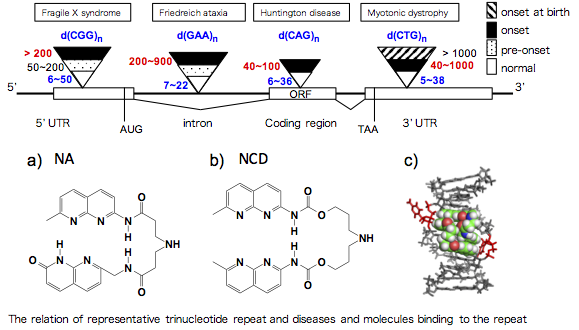|
The expansion of trinucleotide repeat (TNR) sequences in human genome is known as causatives of more than 40 hereditary neurological disorders. The CAG sequence in the coding region of protein huntingtin for the patients of Huntington disease is 40~100 repeats, whereas that is about 6~36 repeats for healthy individuals. Aberrant and enormous expansion of the CTG sequence of 5~38 repeat in 3’-UTR of DMPK gene up to 40~1000 repeats was observed for the patients of Myotonic Dystrophy type 1. The CGG repeat expansion causes the Fragile X syndrome upon expansion up to more than 200 repeats. The common feature of the mechanism in TNR expansion and contraction involves the non-canonical secondary structures produced on the TNR sequences. The expanded CXG repeats can fold into a hairpin secondary structures containing a number of the palindromic CXG/CXG motif, which hold a X-X mismatch flanked by two C-G base pairs. We have discovered small molecules that selectively bound to the CAG/CAG motif, CGG/CGG motif, and other repeat sequences. In the presentation, we will describe and discuss our recent progress on these studies.
|

|
 120th General Meeting of the KCS
120th General Meeting of the KCS
 120th General Meeting of the KCS
120th General Meeting of the KCS